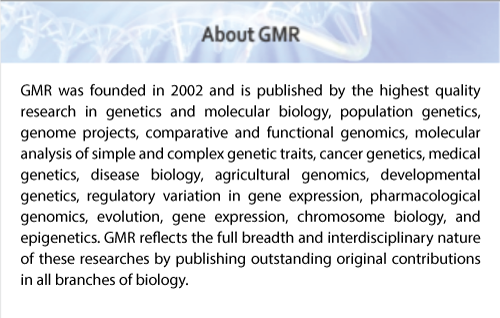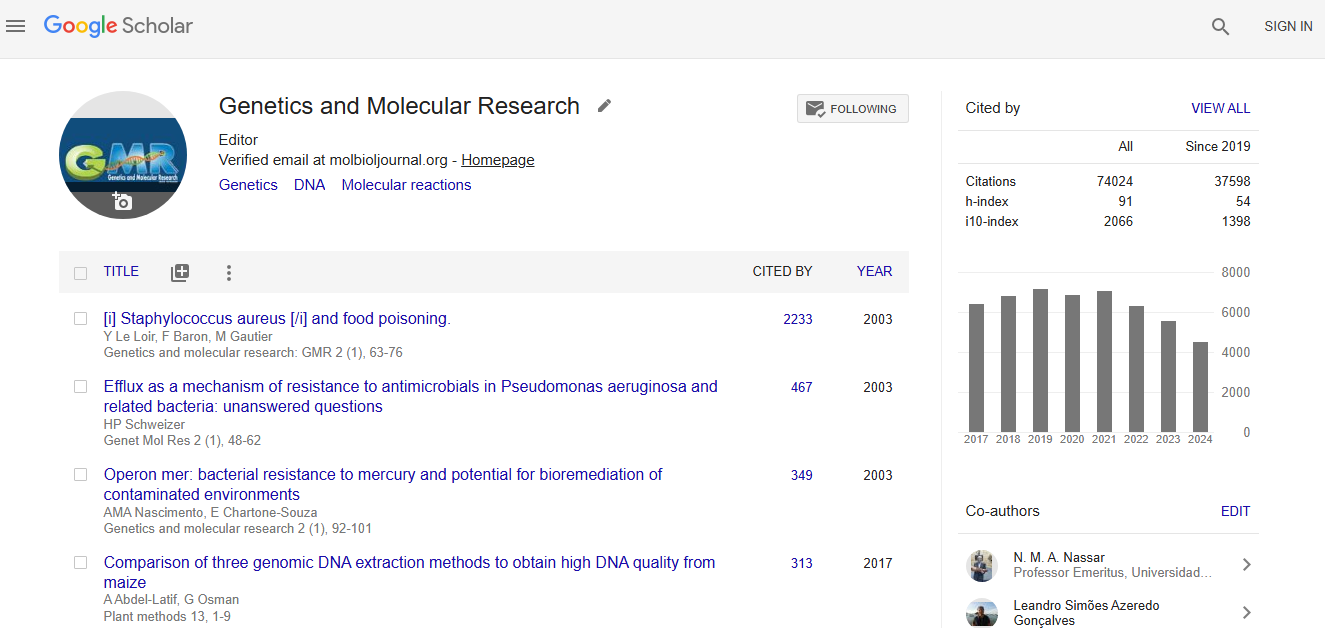Abstract
Development of primer pairs from diverse chloroplast genomes for use in plant phylogenetic research
Author(s): Y.C. Yang, T.L. Kung, C.Y. Hu and S.F. LinVariation in the chloroplast DNA sequence is useful for plant phylogenetic studies. However, the number of variable sequences provided by chloroplast DNA for suggested genes or genomic regions in plant phylogenetic analyses is often inadequate. To identify conserved regions that can be used to design primers and amplify variable sequences for use in plant phylogenetic studies, the complete chloroplast genomic sequences of six plant species (including Oryza sativa, Arabidopsis thaliana, Glycine max, Lotus japonicus, Medicago truncatula, and Phaseolus vulgaris), searched from the taxonomy database of NCBI were investigated. A total of 93 conserved regions, 32 in large single copy and 61 in inverted repeat regions, were identified. A set of five primer pairs were designed according to the conserved sequences located in the psbA~trnK, psbB~psbH, rpl23~trnI, trnR~trnN, and trnY~trnD regions to amplify variable DNA fragments. An additional 18 plant accessions from 14 species were used to validate their utility. Each of the tested species could be distinguished by length polymorphisms of fragments amplified with the five primer pairs. trnR~trnN and rpl23~trnI amplified fragments specific to monocot and legume species, respectively. Three primer pairs located in the psbA~trnK, psbB~psbH, and trnR~trnN regions were applied to amplify variable DNA sequences for phylogenetic analysis using the maximum parsimony method. The consistent result between taxonomy and phylogenetic analysis on the variable sequences amplified with these three primer pairs was revealed. The five newly developed primer pairs are recommended as tools for use in the identification of plant species and in phylogenetic studies.
Impact Factor an Index

Google scholar citation report
Citations : 74024
Genetics and Molecular Research received 74024 citations as per google scholar report
